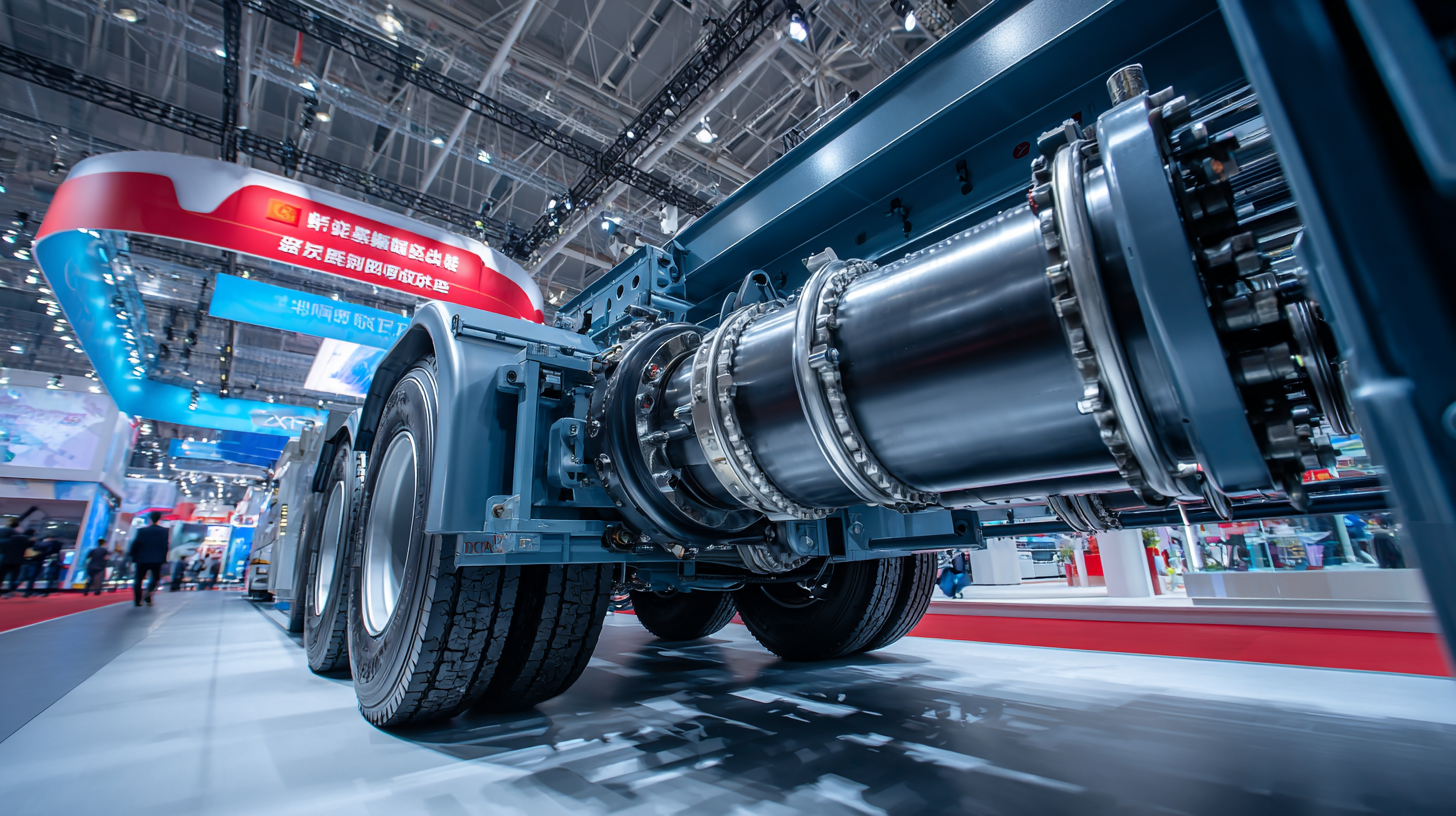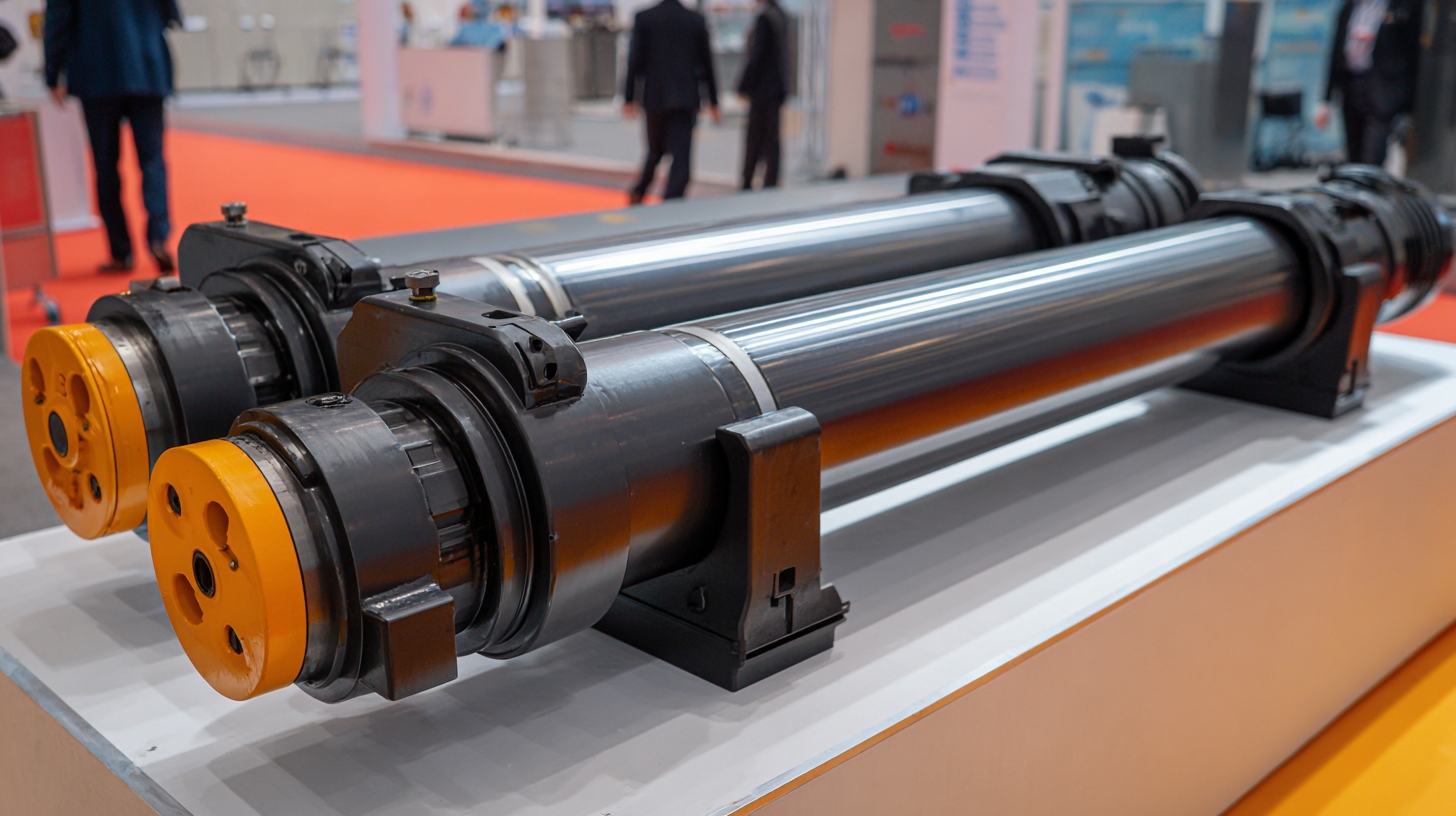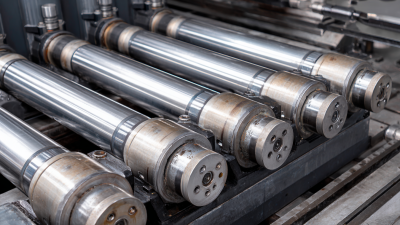
Exploring Market Potential of Telescopic Cylinders Underbody at 2025 China Import and Export Fair
As the global market for hydraulic systems continues to expand, the significance of components such as Telescopic Cylinders Underbody is gaining attention amongst manufacturers and suppliers. According to a report by MarketsandMarkets, the hydraulic cylinder market is projected to reach USD 25.35 billion by 2025, with a compound annual growth rate (CAGR) of 4.5% from 2020 to 2025. The importance of Telescopic Cylinders Underbody, particularly in applications such as construction, agriculture, and material handling, remains critical due to their ability to provide compact solutions with extended reach.

The upcoming 2025 China Import and Export Fair, specifically the 138th session, presents a pivotal platform for stakeholders to explore market potential, address emerging trends, and foster partnerships in this evolving landscape. Engaging with industry leaders and potential clients at this key event will allow for a deeper understanding of market demands and innovations driving the future of Telescopic Cylinders Underbody.
Market Trends of Telescopic Cylinders in the Global Industry Before 2025
The market for telescopic cylinders is poised for significant growth as we approach 2025, driven by advancements in technology and increasing global demand. Industry analyses predict a continued upward trajectory in market size, bolstered by the expanding application of these cylinders in various sectors, including construction, automotive, and manufacturing. This trend reveals an impressive growth rate, suggesting that companies are increasingly recognizing the benefits of integrating telescopic cylinders into their operations for enhanced efficiency and performance.
As we project towards 2032, the trends indicate that innovation will play a pivotal role in shaping the telescopic cylinder market. The transition towards smart manufacturing and automation signifies that manufacturers will focus on developing more sophisticated and adaptable designs that cater to the diverse needs of industries worldwide. Furthermore, the emergence of sustainability as a critical factor in production processes will influence the materials and methods employed in the manufacture of telescopic cylinders. This evolving landscape will not only create new opportunities for manufacturers but also reshape competitive dynamics in the global marketplace.

Analysis of China’s Demand for Telescopic Cylinders in Various Sectors
The demand for telescopic cylinders in China is projected to grow significantly across various sectors, driven by advancements in technology and increasing application fields. The market can be segmented by functionality into single-acting and double-acting cylinders, revealing that double-acting cylinders are expected to dominate the market due to their versatility in industrial applications. Additionally, the product types, including application cylinders, tie rod cylinders, and others, indicate a robust growth potential in sectors such as construction and agriculture.
According to industry reports, the market for telescopic cylinders in China is anticipated to reach a substantial value by 2025, benefiting from the expansion of industrial equipment and mobile machinery. The construction industry alone is expected to account for a significant share of this market, bolstered by ongoing infrastructure projects and a focus on modernization. As a result, players in the hydraulic systems market must position themselves strategically to capitalize on these growing demands.
Tips: When exploring opportunities in this market, consider the importance of innovation and technological advancements. Companies should focus on developing energy-efficient and durable products to meet changing consumer preferences. Moreover, understanding the specific needs of various end-use industries, such as aerospace and defense, can provide a competitive edge in this evolving landscape.
Market Potential of Telescopic Cylinders in China (2025)
Competitive Landscape: Key Players in the Telescopic Cylinder Market
The telescopic cylinder market is witnessing significant growth as industries look for innovative solutions to enhance efficiency and performance. According to a recent report by MarketsandMarkets, the global telescopic cylinder market is projected to reach USD 4.2 billion by 2025, growing at a CAGR of 6.3% from 2020. This growth is largely driven by the rising demand from construction, material handling, and automotive sectors. As companies strive to optimize space and improve lifting capabilities, the role of major players in the market becomes increasingly critical.
Key players in the telescopic cylinder landscape are not only competing on technology and innovation but also on geographic presence. Leading manufacturers such as Parker Hannifin Corporation, Bosch Rexroth AG, and Eaton Corporation are investing heavily in R&D to develop advanced hydraulic solutions that meet stringent industrial standards. Furthermore, a strategic focus on expanding distribution networks in emerging markets, as highlighted in the 2023 Industrial Hydraulic Equipment Report, is crucial for these players. With the increasing relevance of sustainability and efficiency, these companies are also incorporating eco-friendly practices into their product lifecycle, thus positioning themselves competitively at the upcoming 2025 China Import and Export Fair.
Exploring Market Potential of Telescopic Cylinders Underbody at 2025 China Import and Export Fair - Competitive Landscape: Key Players in the Telescopic Cylinder Market
| Dimension | Market Share (%) | Growth Rate (CAGR %) | Key Applications | Region |
|---|---|---|---|---|
| Small | 25 | 4.5 | Construction Machines | Asia Pacific |
| Medium | 35 | 5.0 | Agricultural Equipment | Europe |
| Large | 20 | 3.8 | Material Handling | North America |
| Custom | 15 | 6.1 | Automotive | Latin America |
Growth Opportunities for Telescopic Cylinders in Emerging Markets
The market for telescopic cylinders is gaining significant traction, particularly in emerging markets. These regions are witnessing rapid industrialization, which is propelling the demand for efficient hydraulic systems in various sectors such as construction, agriculture, and material handling. The adoption of telescopic cylinders, known for their ability to provide high force within a compact design, aligns perfectly with the needs of industries seeking to maximize productivity and minimize space constraints.
As we approach the 2025 China Import and Export Fair, the potential for growth in the telescopic cylinder market is evident. Growing infrastructure projects and an increase in mechanization across industries in emerging markets present lucrative opportunities for manufacturers and suppliers. Furthermore, with the global push towards sustainability, innovative designs that enhance energy efficiency will likely gain favor, making telescopic cylinders even more appealing. Companies that strategically position themselves to leverage these trends will be well-positioned to capitalize on the expansive market potential.
Regulatory Impact on the Import and Export of Telescopic Cylinders in China
The import and export of telescopic cylinders in China are significantly influenced by the regulatory landscape, which shapes market dynamics. Recent changes in trade regulations, such as tariffs and restrictions, have heightened the complexity of cross-border transactions. As seen in other sectors, like the evolving European Union packaging regulations, a similar need for adaptation can be observed within the telescopic cylinder market. The optimization of supply chains and compliance with new standards are essential for manufacturers and exporters aiming to capture market potential at events such as the 2025 China Import and Export Fair.
Furthermore, the regulatory framework will likely determine the competitive landscape of the industry. As countries tighten their regulations on imports to enhance domestic production, companies dealing in telescopic cylinders must navigate these complexities to maintain their market position. Comparing this to challenges faced across various industries, it’s evident that understanding and adhering to regulatory demands is crucial in mitigating risks and enhancing trade prospects. The ability to adapt to these regulatory changes will ultimately influence not only growth opportunities but also the sustainability of businesses in this sector.

Related Posts
-

Essential Tips for Identifying Reliable Manufacturers of Best Telescopic Cylinders Underbody
-

The Ultimate Guide to Understanding Telescopic Cylinders Underbody Applications and Benefits
-

The Ultimate Guide to Sourcing Telescopic Cylinders Underbody for Global Buyers
-

Ultimate Guide to Mastering Telescopic Cylinders Underbody for Enhanced Performance
-

Exploring Alternative Solutions for Telescopic Cylinders Underbody Applications
-

How to Choose the Right Telescopic Cylinders Underbody for Optimal Performance
